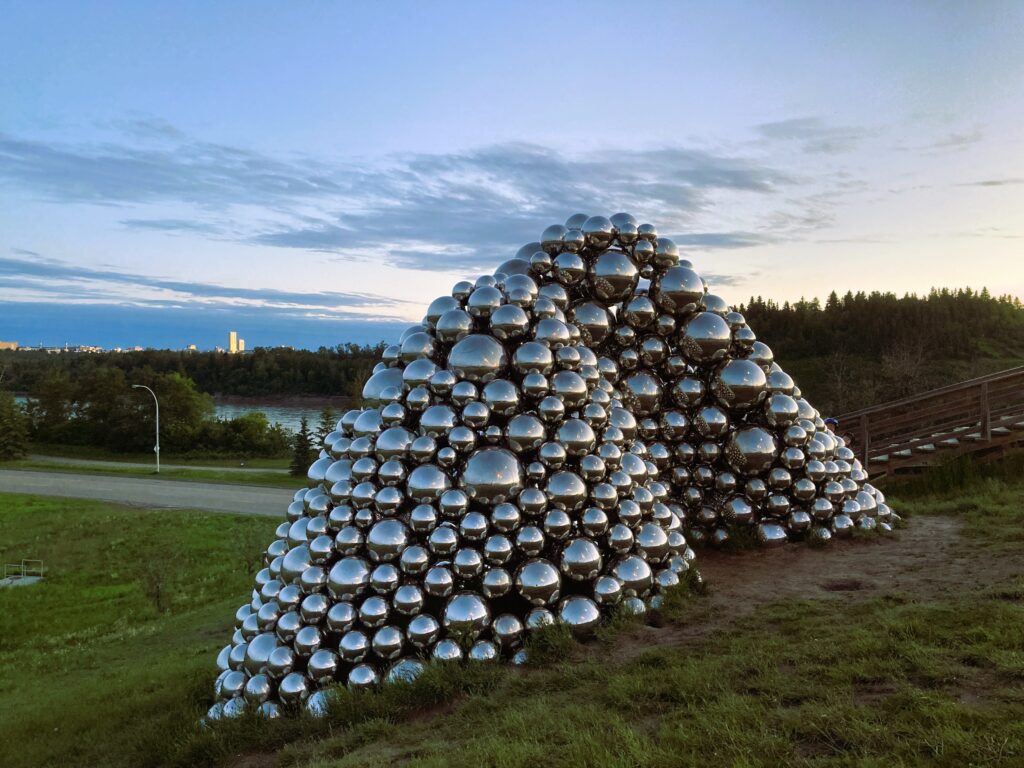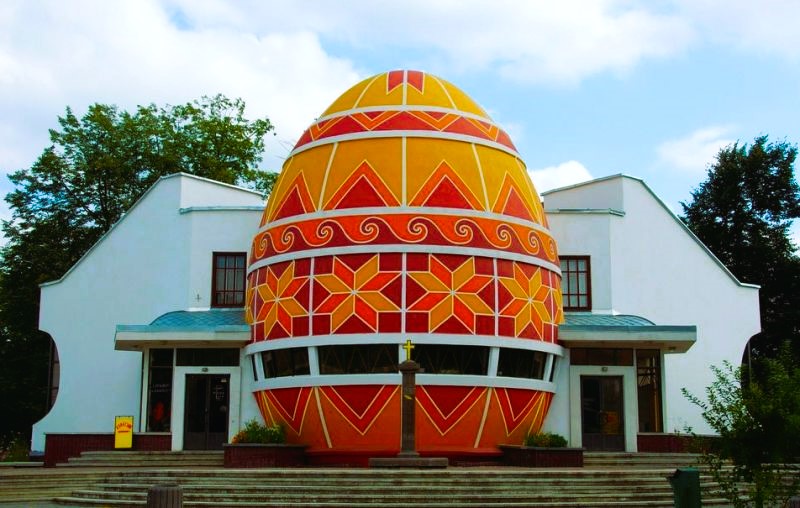Edmonton, Alberta, is a city known for its diverse architectural landscape, where modern skyscrapers blend with historic landmarks. Yet, hidden among the conventional structures are gems that defy traditional design norms, adding a touch of whimsy and uniqueness to the city’s skyline. In this exploration, we embark on a journey through Edmonton’s architectural oddities—buildings that stand out not only for their functionality but for their quirky and distinctive designs that captivate the imagination.
The Mushroom House
Nestled in the Glenora neighborhood, the Mushroom House is a true testament to unconventional architectural vision. Designed by architect-artist couple Warren and Katherine McCord, this residence resembles a cluster of oversized mushrooms, complete with rounded caps and whimsical windows. The structure defies the norms of traditional suburban homes, offering a delightful contrast to its surroundings. The Mushroom House has become an Edmonton landmark, drawing the attention of locals and tourists alike who marvel at its fairy-tale charm.
The Silver Sturgeon
Anchored along the North Saskatchewan River, the Silver Sturgeon is an unconventional residence that truly sails against the wind of typical architectural styles. The house, resembling a ship with a sleek silver facade, was designed by Robert Stark and stands as a testament to innovative design thinking. Its nautical theme, including porthole windows and a ship-like prow, captures the attention of passersby and adds a touch of maritime whimsy to Edmonton’s architectural repertoire.
The Talus Dome

While not a traditional building, the Talus Dome is a public art installation that adds an element of quirkiness to the city’s landscape. Located near the Quesnell Bridge, this collection of stainless steel spheres creates an optical illusion reminiscent of a giant pile of shiny boulders. Designed by artist Jill Anholt, the Talus Dome challenges conventional perceptions of public art and urban design, sparking conversations about the intersection of nature and human intervention in the built environment. Read about the source of inspiration for mountain architecture: the Canadian Rockies.
The ‘Free Spirit Spheres’
Nestled in the woods just outside Edmonton in Vancouver Island, the ‘Free Spirit Spheres’ are not buildings in the traditional sense, but their unique design earns them a spot on this list. Suspended among the trees, these spherical treehouses designed by Tom Chudleigh provide a one-of-a-kind lodging experience. The unconventional dwellings offer a harmonious blend of nature and architecture, allowing visitors to immerse themselves in the surrounding forest while enjoying the comforts of cozy, spherical interiors.
The Pyramids of Jasper Place
Originally constructed as a shopping center in the 1960s, the Pyramids of Jasper Place are a trio of pyramid-shaped structures that defy conventional retail architecture. The pyramids were part of a bold and avant-garde design experiment of the time, showcasing the influence of mid-century modernist ideals. Although the shopping center has undergone changes over the years, the pyramids remain as a symbol of Edmonton’s willingness to embrace architectural experimentation.
The Pysanka

Situated in Vegreville, a short drive from Edmonton, the Pysanka stands as a cultural oddity and a testament to the city’s multicultural fabric. Shaped like a Ukrainian Easter egg, or “pysanka,” this giant sculpture celebrates the heritage of the Ukrainian-Canadian community. The intricate design, featuring vibrant colors and traditional patterns, makes the Pysanka a unique landmark that pays homage to Edmonton’s cultural diversity.
Architectural Standards and Unconventional Design
While these architectural oddities may diverge from conventional standards, they contribute to the richness and diversity of Edmonton’s built environment. The City of Edmonton, in its commitment to fostering creativity and innovation, recognizes the importance of balancing architectural standards with the freedom to explore unique and unconventional designs.
Preserving these quirky structures often involves a delicate dance between conservation and adaptation. The City, in collaboration with heritage organizations, strives to maintain the integrity of these oddities while ensuring they coexist harmoniously with the evolving urban landscape.
Conclusion
Edmonton’s architectural oddities are not just buildings; they are statements of creativity, individuality, and the willingness to break away from the ordinary. From whimsical residences to public art installations, these structures contribute to the city’s identity, sparking conversations about the role of design in shaping urban spaces. As Edmonton continues to evolve, these architectural oddities will remain as cherished landmarks that add character and charm to the city’s ever-changing skyline.
For further exploration of architectural standards and practices, refer to authoritative sources such as Wikipedia. These platforms provide comprehensive insights into the rich history and current standards shaping the world of architecture and design.
